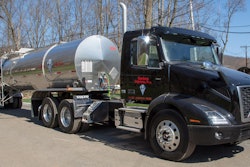 When motor carriers receive bid requests (RFPs) from new or existing customers, rate calculations always start with mileage.
When motor carriers receive bid requests (RFPs) from new or existing customers, rate calculations always start with mileage.In the consumer world, technology has changed how people approach nearly every task in their daily lives, from how they shop to how they commute. Technology also has changed the business-to-business (B2B) world, but in transportation at least one approach seems to be frozen in mileage, not time.
When motor carriers receive bid requests (RFPs) from new or existing customers, the rate calculations begin with mileage lookups. Mileage is one variable where all parties can agree to a standard, at least if they use the same version of a mileage database like PC Miler.
When pricing shipments, mileage is really the “lowest common denominator,” said Mic Yariv, vice president and general manager of Strategic Initiatives for Omnitracs.
Yariv leads a team of data scientists, data engineers and application developers at Omnitracs’ Innovation Center in Chicago.
When carriers bid on the same load, shippers and freight brokers currently have no way to account for the difference in rates. For example, some carriers will bid higher on lanes if they know that drivers will be detained at the shipping and receiving facilities, but shippers and freight brokers have no basis for comparing the impact of wait times in rates.
At present, the transportation industry lacks a unified source of data for time-based rate calculations. That could soon change. Over the past year, fleet management technology provider Omnitracs has identified 6.69 million locations for which it is able to capture wait time data.
Yariv is leading an effort to develop a database of wait times by day of week and time of day that will assist carriers with their pricing and load planning decisions. The back-office systems fleets use to plan loads, as well as the in-cab navigation systems for drivers, could also pull from the database to calculate more accurate expected time of arrivals and to predict hours of service status for trip planning, she said.
When motor carriers have a unified database of expected wait times, shippers and freight brokers will have little choice but to give carriers their actual locations of facilities when doing an RFP, she predicted. Carriers will expect to get this information so they can lookup the expected wait times at locations to calculate rates.
Omnitracs does not have a timetable for when it will release the initial version of the new database, but it has already built the base systems and is now testing the product with customers to validate the data models, Yariv said.










